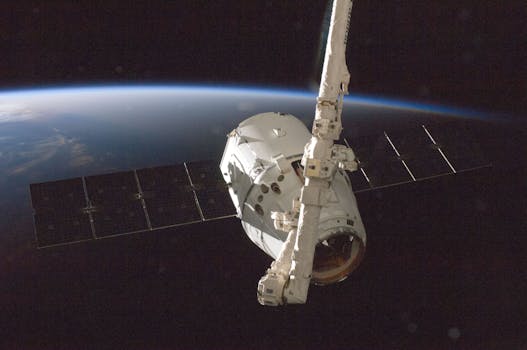
The Rise of LEO Satellites: Revolutionizing Global Connectivity with LEO Satellites
LEO satellites are at the forefront of a revolution in global connectivity, providing faster and more reliable connections than traditional satellite systems. With the ability to orbit the Earth at an altitude of around 160 to 2,000 kilometers, LEO satellites are ideally positioned to offer low-latency and high-speed data transfer, making them an attractive solution for a wide range of applications, from broadband internet access to IoT connectivity.
How LEO Satellites Work
LEO satellites are designed to operate in a low Earth orbit, which allows them to take advantage of the Earth’s gravitational pull to maintain their position and velocity. This orbit also enables LEO satellites to communicate with Earth-based stations using smaller and more compact antennas, reducing the cost and complexity of the system. The satellites themselves are typically smaller and more lightweight than traditional satellites, making them easier and less expensive to launch.
One of the key benefits of LEO satellites is their ability to provide low-latency connections. Because they are closer to the Earth than traditional satellites, LEO satellites can communicate with Earth-based stations in a matter of milliseconds, making them ideal for real-time applications such as video conferencing and online gaming. Additionally, LEO satellites can offer higher data transfer rates than traditional satellites, making them well-suited for applications such as broadband internet access and cloud computing.
Applications of LEO Satellites
LEO satellites have a wide range of applications, from broadband internet access to IoT connectivity. One of the most significant applications of LEO satellites is in the provision of broadband internet access to underserved or remote communities. By offering a fast and reliable connection, LEO satellites can help to bridge the digital divide and provide access to essential services such as education and healthcare.
Another key application of LEO satellites is in the field of IoT connectivity. With the ability to provide low-power and low-cost connectivity, LEO satellites are ideal for IoT applications such as smart agriculture, smart cities, and industrial automation. Additionally, LEO satellites can be used for Earth observation, providing high-resolution images and data on the environment, climate, and natural resources.
Challenges and Future Developments
While LEO satellites offer many benefits, there are also several challenges that need to be addressed. One of the key challenges is the issue of congestion in the low Earth orbit, which can lead to interference and collisions between satellites. To address this issue, regulatory bodies such as the Federal Communications Commission (FCC) are working to develop new rules and guidelines for the operation of LEO satellites.
Another challenge facing LEO satellites is the issue of cost. While the cost of launching and operating LEO satellites is decreasing, it is still a significant barrier to entry for many companies and organizations. To address this issue, companies such as SpaceX and Amazon are working to develop new launch technologies and business models that can reduce the cost of accessing space.
In conclusion, LEO satellites are revolutionizing the way we communicate and access data, offering faster and more reliable connections than traditional satellite systems. With their ability to provide low-latency and high-speed data transfer, LEO satellites are ideally positioned to meet the growing demand for global connectivity and IoT applications. As the technology continues to evolve and improve, we can expect to see even more innovative applications of LEO satellites in the future.



